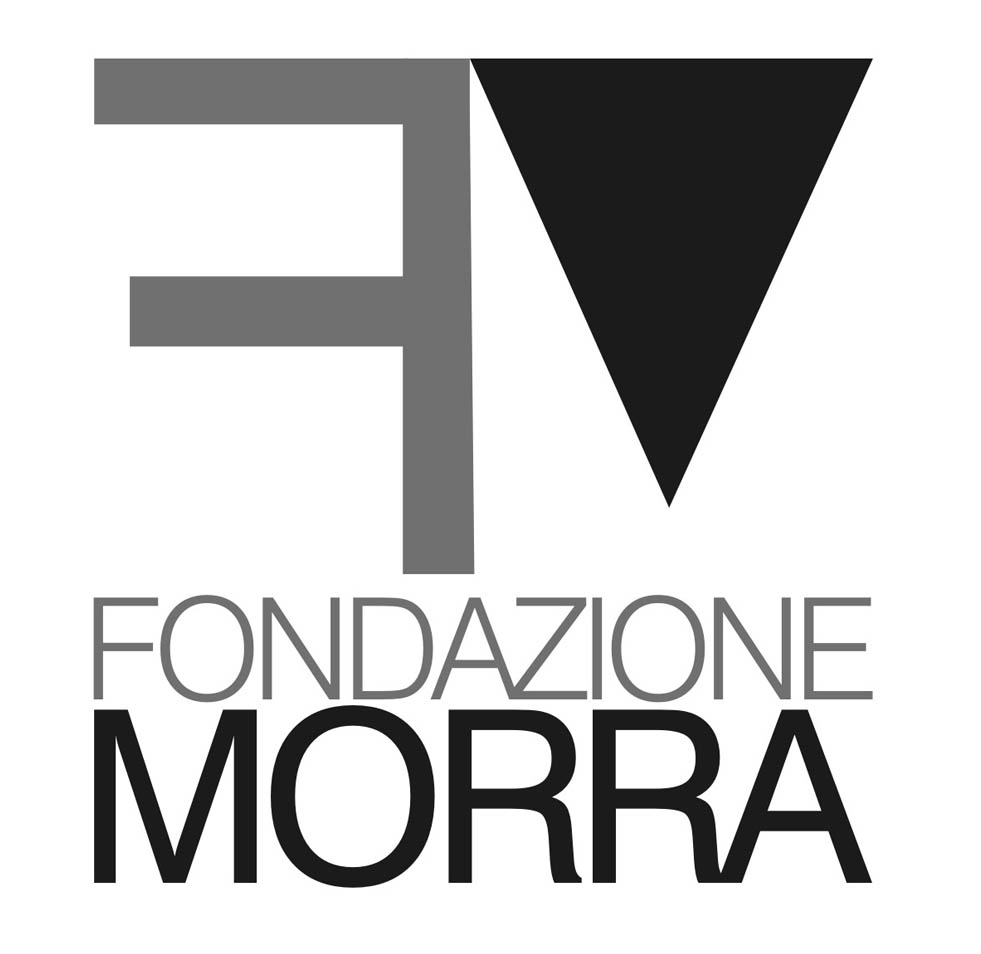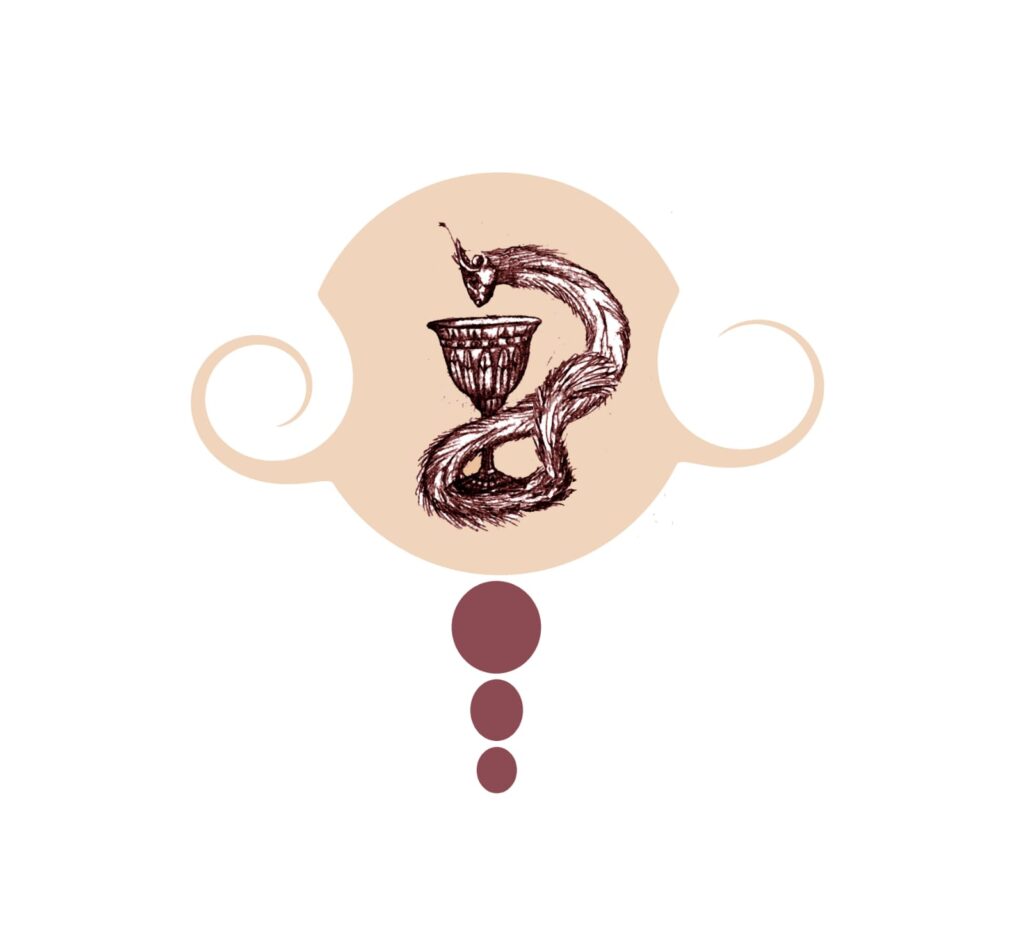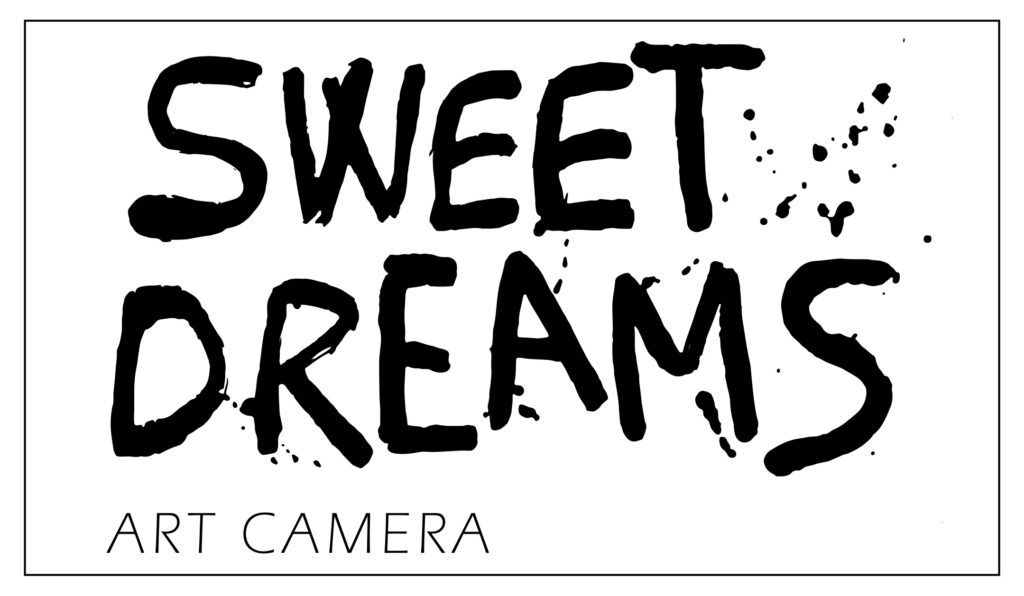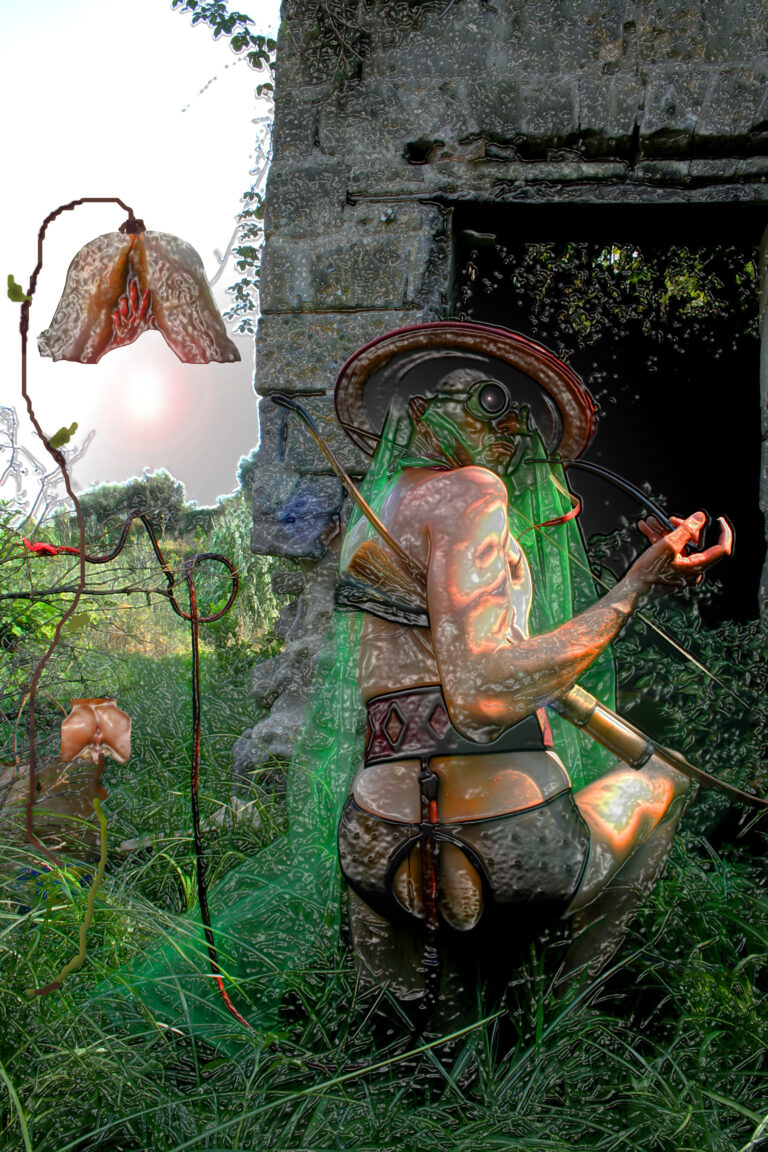Fondazione Morra and Fondazione Scoiattolo del Graal present:
The Living room of the Gods
An installation of Maurizio Elettrico
Curated by Chiara Valci Mazzara
September 15th – October 13th 2024
Sweet Dreams Project Room
Puder Straße 43 12435 Berlin Germany
Maurizio Elettrico (Naples, 1965) lives and works in Naples. After his studies in natural sciences, he focused his artistic research on the interdisciplinary relationship between philosophy, history and iconography. His artistic practice is characterised by the variety of techniques, ranging from freehand drawing on fine art paper and fabrics, to collage, video, performance, writing, sculpture and installations created from recovered materials. He expresses his elaborate ideas through a specific iconography described with a unique literary lexicon he created. In his oeuvre Elettrico re-invents the world by inserting it into a new mythological reality constituting a combination of the sacred and the science-fiction. Harmonizing dissonant forms and materials, he opens up a fascinating path to a magical world suspended between the past and the future, organised according to a mysterious and ideological taste for alchemy, that dissolves itself into a blend of intelligence, artistic creation, scientific and technological knowledge.
Elettrico’s hometown Naples remained a strong point of reference throughout his career. He started his career with a solo exhibition at Vera Vita Gioia’s Gallery in 1993, and continued to develop his artistic practice in close collaboration with Studio Morra (The Others’ Garden solo show, 2002) and later on Fondazione Morra which continues to promote his activities until today. Also Naples houses Elettrico’s site-specific permanent installation called Wunderkammer. In 2004 Edizioni Morra published The New Empire, a volume written by Elettrico, that presents a series of imaginary scenarios, revealing his visions about alternative future worlds. Shortly after he produced a large-scale installation at the Padova Charterhouse and exhibited within Quadriennale di Roma at the National Gallery of Contemporary Art (GNAM – Rome). In 2006 he presented his solo show Lo Scoiattolo e il Graal (The Squirrel and the Grail) based on the characters from his book The New Empire at the National Museum of Capodimonte in Naples. In 2007 the exhibition Cervandro – Il Nudo travestito (Cervandro, the nude in disguise) was shown in Pio Monti Arte Contemporanea in Rome, followed by a solo show at Lipanje Puntin Gallery in Trieste. In 2009 he presented his work at the Venice Biennale (Arsenale) and the Knokke Biennale in Ghent in collaboration with the Hoet Bekaert Gallery. In the same year, his volume L’Infante demiurgo was published by Mimesis Edizioni, Milan. In 2011 he participated for the second time in the Venice Biennale, and in 2013 took part in the multimedia exhibition Biorema in the Paola Verrengia Gallery in Salerno. In 2015 his large scale sculpture Cibum Deorum was included in the exhibition L’Albero della cuccagna, Nutrimenti dell’Arte curated by Achille Bonito Oliva, presented throughout Italy. In 2016 his solo show Historia Supernaturalis curated by Eugenio Viola, was organised at the PAN Museum of Naples. In 2020-2021 another solo exhibition in the form of a site-specific installation called An ephemeral banquet for the invisible guest: waiting for the bio-aristocrat curated by Chiara Valci Mazzara and Susanne Prinz was presented at the Kunstverein am Rosa-Luxemburg Platz in Berlin, in collaboration with Fondazione Morra; the show, an all-embracing immersive installation included new sculptural works and an opera sound piece inspired by the seven-volume saga Lo Scoiattolo e il Graal (The squirrel and the Grail) developed since 2009. In July 2022 Elettrico’s installation Convivium Aeternum curated by Marta Wroblewska inaugurated the activity of Ipogeo dei Cristallini in Naples. In June 2023 his solo show Imago mundi curated by Marta Wroblewska was presented at Oronsko Polish Sculpture Center.
Elettrico’s works are included in the permanent collections of numerous institutions, among which are: S.M.A.K. Museum Van Heden Daagse Kunst in Ghent (Belgium), The Madre – museo d’arte contemporanea Donnaregina in Naples (Italy), Fondazione Morra in Naples (Italy) and Oronsko Polish Sculpture Center (Poland).
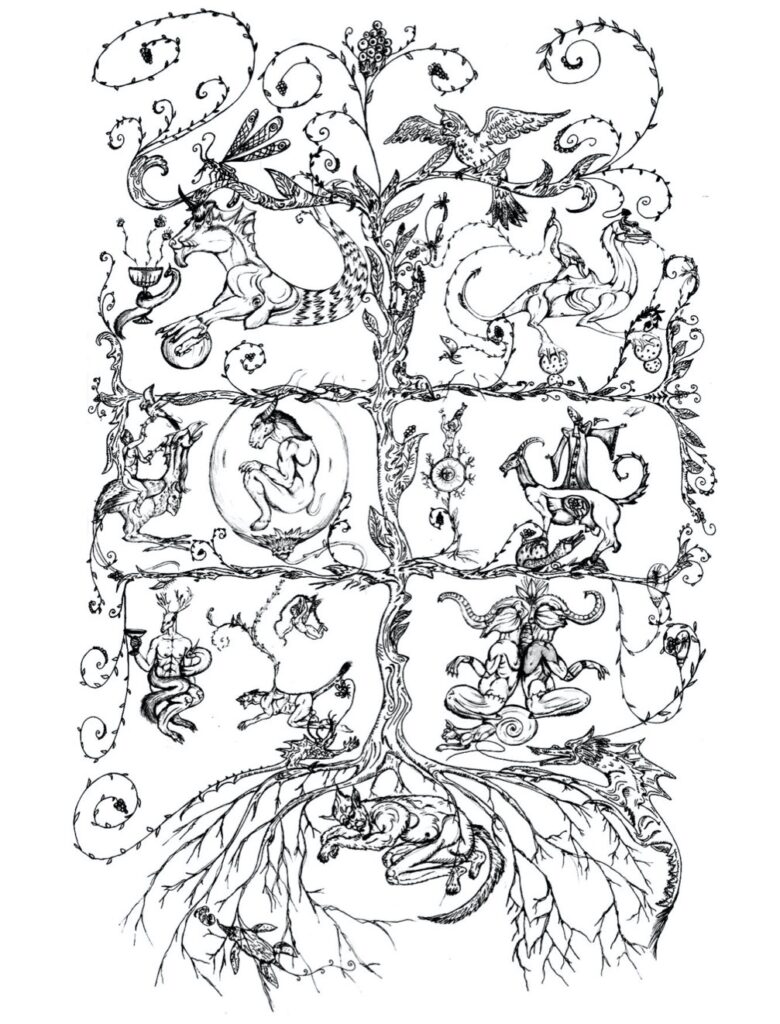
@ Maurizio Elettrico
Through drawings and collages the installation unravels the features, shapes and wit of the characters, proposing a physical and literary journey in which each work presents a metaphysical and spiritual function linked to the main figures of the volumes of the trilogy.
The works and the installation aim to create a labyrinth of the imagination where one can lose oneself and find oneself in the company of spiritual beings and creatures that have never been born or are not yet and reveal their paradoxically yet concrete reason to be in that future world.
The whole installation appears almost like a monumental storyboard which proves the multimedia versatility of the project, implements a continuous exchange between sign and meaning and between different expressive languages, without reducing the image to an illustration of a text nor limiting the latter to a mere novel.
